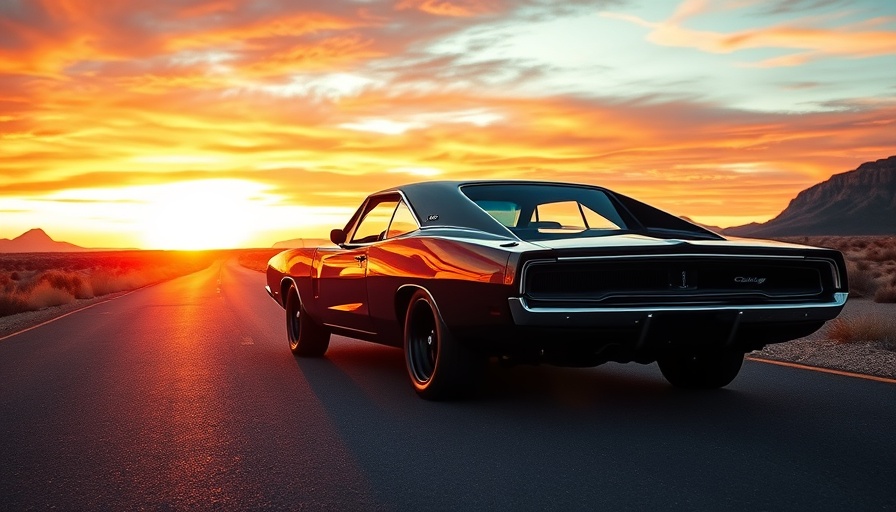
Understanding Salvage Titles: What You Need to Know
Before diving into the world of salvage cars, it's crucial to grasp what a salvage title signifies. When an insurance company deems a vehicle a total loss due to accidents, floods, or fires, it gets a salvage title. This designation can open the door for buyers keen on securing a bargain. However, it often masks hidden issues that require thorough scrutiny. While some damage is overt, the more sinister problems lurk beneath the surface, ready to surprise unsuspecting buyers.
Importance of Vehicle History Reports
One of the first things to do when considering a salvage car is obtaining its vehicle history report. This document is invaluable as it lays bare past accidents, insurance claims, and ownership histories. Buyers should particularly focus on details like previous flood classifications, as prolonged exposure to water can wreak havoc on a vehicle’s wiring and electronics. For those interested in water-damaged vehicles, knowing how long the car was submerged can help anticipate future repair needs.
Spotting Frame and Structural Damage
Frame damage represents one of the most daunting challenges when assessing salvage cars. Even if the exterior appears unscathed, the vehicle's core structure may be compromised. Understanding what constitutes frame damage—like bent rails or compromised crumple zones—is essential for evaluating a vehicle's safety and functionality. Key indicators of frame issues include uneven panel gaps and misaligned doors. For a definitive assessment, always consider a professional inspection from a reliable body shop.
Inspecting the Undercarriage for Hidden Problems
Many significant problems can be hidden from plain view, especially beneath the undercarriage. A thorough check for rust, scrapes, and uneven components can provide insights into the vehicle's condition. For buyers of accident-damaged cars, examining the suspension is critical. Look for damaged suspension arms or unusual tire wear, as these signals could point to deeper alignment issues or structural compromises.
Risks of Flood-Damaged Vehicles
Flood-damaged cars carry unique risks that extend beyond mere water stains or mold inside the cabin. Buyers should be vigilant during inspections, lifting carpets and sniffing for musty odors. Indicators of water exposure might include rust on seat rails and moisture accumulation where it shouldn't be. Remember, flood-damaged vehicles might still run, but underlying electrical system failures can surface unexpectedly, leading to significant repairs down the line.
Evaluating Hail Damage and Its Implications
Hail damage can appear deceptively benign, presenting as mere cosmetic imperfections. However, these external dents may mask internal problems, such as broken sensors or damaged safety features, which could affect overall vehicle performance. Buyers should avoid overlooking subtle signs of impact; using a flashlight can reveal important clues while inspecting the roof and hood.
Recognizing Poor Repair Work
Even if a salvage vehicle has been repaired, it doesn’t guarantee the work was executed well. Some cars may have undergone expert collision repairs, while others may show signs of quick, insufficient patchwork. It's vital to scrutinize repairs and judge whether they meet professional standards. Poor workmanship could lead to further costly issues down the line.
Expert Tips for a Successful Salvage Car Purchase
For new buyers, these practical tips can make the process smoother. First, create a comprehensive vehicle maintenance checklist to ensure you cover all bases during an inspection. The checklist should include routine checks, such as evaluating brake pads and ensuring tire rotations are on schedule. Familiarize yourself with car maintenance tips and common issues such as how to check transmission fluid or troubleshoot a non-functioning AC system. By being equipped with knowledge, you empower yourself to make informed decisions that can lend to smarter purchasing.
Conclusion: Making Informed Decisions
Navigating the purchase of a salvage car can be daunting, but understanding the factors that contribute to hidden damage can help you avoid costly mistakes. Utilize vehicle history reports, inspect thoroughly for frame and water damage, and remember that not all repairs indicate a safe investment. As you embolden yourself with knowledge on vehicle maintenance and salvage cars, you take strides towards a successful buying experience.
 Add Row
Add Row  Add
Add 




Write A Comment